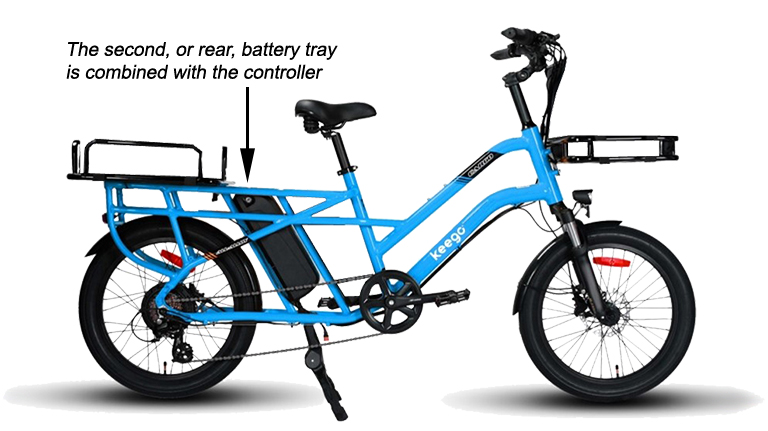How Can We Help?
Replacing the Controller
The controller on an ebike is best described as the “brain” of the bike. The ebike controller understands the riders commands and pedal movements and redistributes the power from the battery to the motor. The KG4 has space for two batteries. The second, or rear, battery tray is combined with the controller.

Tools needed:
- 4mm Allen wrench
- Zip ties
- The replacement battery tray from Keego
There are 5 cables connected to the controller connecting it to the various parts of electric system:
- Wiring harness leading to the
- Front light
- Left and right brake sensors
- Throttle
- Display
- Rear light
- Secondary (front) battery tray
- Motor
- E- lock (optional)
Remove the Rear Battery Tray and Controller
- Get the ebike ready for maintenance. Turn off the bike, remove the battery, and discharge the remaining power.
- Locate and unplug the battery connector. Trace the cable from the battery to the large connector near the bottom bracket. Pull each side of the connector directly apart, without twisting, to unplug. Snip zip ties to increase cable slack, if needed.
- Remove the battery tray. Use a 4 mm Allen wrench to remove the three-battery tray mounting bolts. Ensure the tool is inserted fully, press firmly, and turn slowly to avoid damaging the bolt heads.
Install the New Battery Tray and Controller
- Locate the new battery tray and place it in position.
- Orient the battery tray so the mounting holes match the mounting points on the ebike frame.
- Route the cable in the same way the old battery tray cable was routed.
- Secure the battery tray to the bike. Thread in the three battery-tray mounting bolts by hand. Use a 4 mm Allen wrench to tighten each bolt evenly, about one turn at a time, alternating between the three bolts until they are all securely tightened. Ensure that the tool is inserted fully, press firmly, and turn slowly to avoid damaging the bolt heads. Do not overtighten.
- Plug in the battery tray connector. Locate the matching connector ends. Align the internal notch with the external markings, and press directly together, without twisting, to connect.
- Secure the cable away from moving parts. Replace any snipped zip ties and trim them to be flush and smooth. Make sure the cable is out of the way of any moving parts.
- Complete.